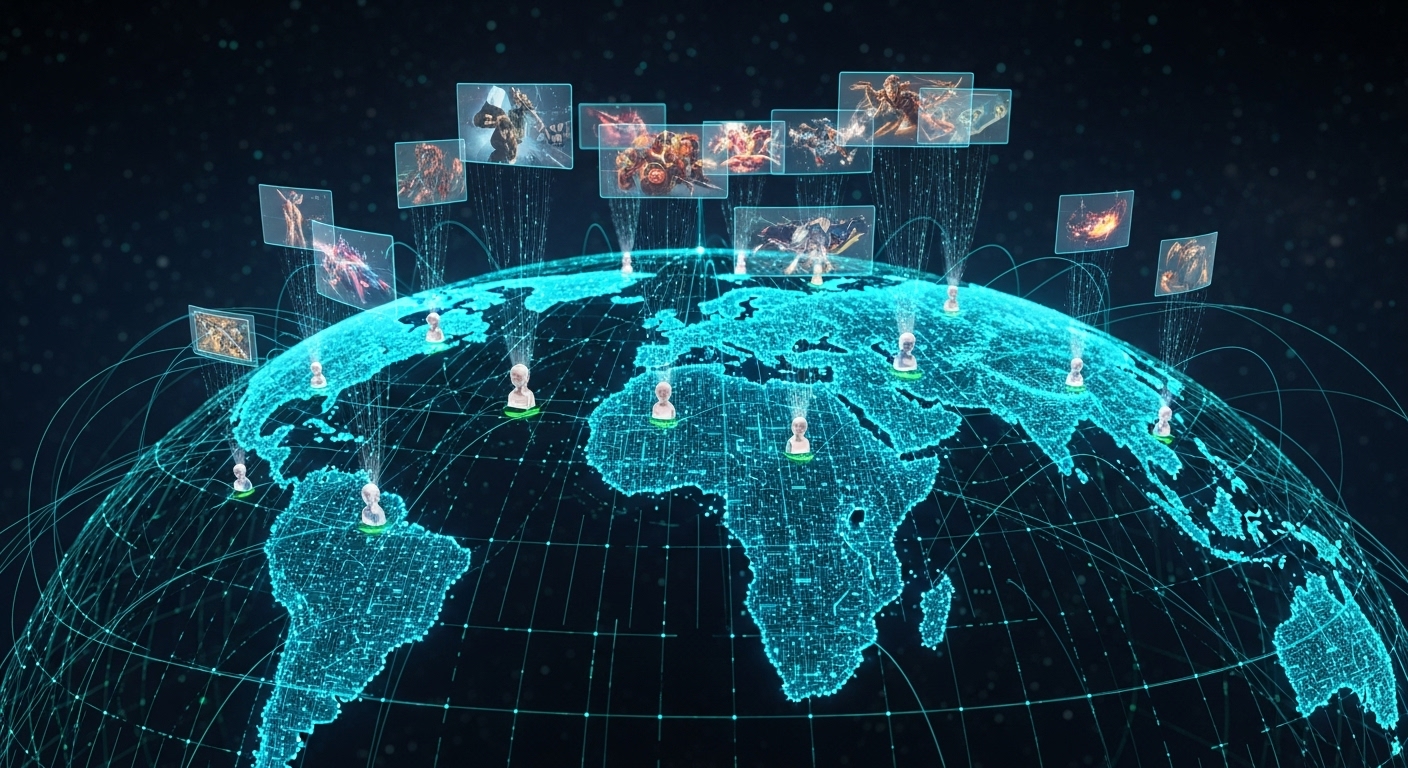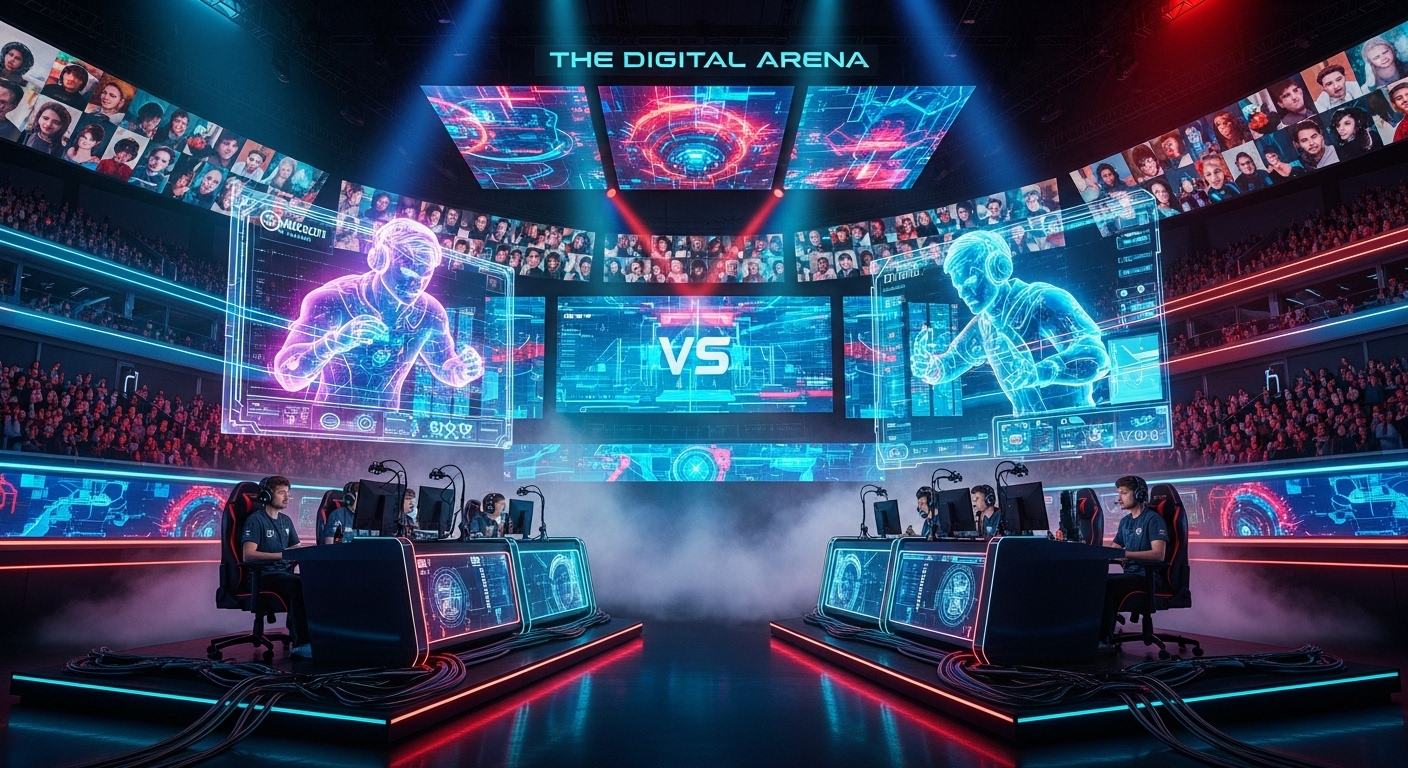Introduction: The Digital Revolution of Sports
In the modern world, sports are no longer confined to physical arenas. A new type of athlete has emerged—one who competes in digital arenas. This phenomenon is called Esports, short for electronic sports. What began as casual gaming has now transformed into a global industry, attracting millions of fans, professional players, and investors worldwide.
Esports combines strategy, reflexes, teamwork, and entertainment, creating a spectacle that rivals traditional sports. From international tournaments to professional leagues, the evolution of Esports demonstrates how technology has revolutionized the way people compete and engage with games. This blog explores the journey of Esports, its impact on society, and its future prospects.
The Origins of Competitive Gaming
The history of Esports stretches back to the early 1970s. The first known video game competition occurred in 1972 at Stanford University, where students played Spacewar for a small prize. Although primitive by today’s standards, this event established the foundation for competitive gaming.
The 1980s marked the rise of arcade culture. Games like Pac-Man, Donkey Kong, and Space Invaders dominated arcades, and players competed for high scores. Gaming magazines published leaderboards, fostering competitive communities.
In the 1990s, the introduction of personal computers and the internet enabled multiplayer competitions. Games like Doom, Quake, and StarCraft allowed players to compete across regions. South Korea became a pioneer in professional gaming by establishing televised StarCraft leagues, attracting a nationwide audience. These early developments set the stage for modern Esports.
Professional Esports: A Real Career Path
Esports has grown into a legitimate profession. Professional players dedicate years to honing their skills, often practicing for multiple hours daily. Success depends on reflexes, strategic thinking, teamwork, and communication.
Organizations like Team Liquid, Cloud9, and Fnatic operate like sports franchises. They employ coaches, analysts, nutritionists, and managers to support players. Compensation includes salaries, tournament winnings, sponsorships, and merchandise revenue.
Despite its rewards, professional gaming presents challenges. Long hours of practice, travel, and high-pressure competitions can lead to mental and physical fatigue. Organizations now provide wellness programs to help players manage stress and maintain performance over long careers.
Popular Esports Game Genres
Esports encompasses a wide variety of game genres, each offering unique competitive experiences.
Multiplayer Online Battle Arena (MOBA)
MOBA games, such as League of Legends and Dota 2, emphasize teamwork and strategy. Players control characters with unique abilities and coordinate with teammates to defeat opponents. MOBA tournaments attract millions of viewers and offer some of the highest prize pools in Esports history.
First-Person Shooter (FPS)
FPS games like Counter-Strike: Global Offensive, Valorant, and Overwatch demand precision, speed, and tactical coordination. Players often assume specialized roles in teams, and success depends on both individual skill and collective strategy.
Battle Royale
Battle royale games, including Fortnite and PUBG, feature large-scale competitions where players or teams fight to be the last standing. The unpredictable gameplay and high stakes make these games ideal for streaming and spectating.
Sports Simulations
Games such as FIFA and NBA 2K replicate real-world sports in a digital environment. Competitive leagues for these games mirror professional sports, drawing players and fans interested in strategy, timing, and in-game knowledge.
Fighting Games
Fighting games like Street Fighter, Tekken, and Super Smash Bros. emphasize one-on-one combat. Players must master timing, combos, and character-specific mechanics. These games maintain passionate grassroots communities and host prestigious international tournaments.
The Rise of Esports Tournaments
Esports tournaments have grown from small local gatherings to major global events. Early competitions involved LAN parties or online matches, but today, professional leagues fill stadiums and attract millions of online viewers.
High-profile tournaments, including The International for Dota 2, the League of Legends World Championship, and the Overwatch League Finals, feature multi-million-dollar prize pools. These events provide live commentary, professional broadcasting, and elaborate production, creating an immersive experience for spectators.
Streaming Platforms and the Growth of Esports
Live streaming has been crucial in Esports’ growth. Platforms allow fans to watch live gameplay, follow professional players, and engage with the community in real time. Streamers can also generate income through subscriptions, donations, and sponsorships, making content creation a viable career.
Streaming democratizes access to Esports. Skilled players from any part of the world can showcase their talent, gain recognition, and even transition into professional leagues. Fans also use streams to learn game strategies, enhancing the interactive and educational aspects of Esports.
Esports as a Spectator Sport
Esports is not just about playing games—it is a spectator sport. Fans enjoy watching high-level gameplay, clutch moments, and strategic executions. Casters, or commentators, provide live analysis and explanation, helping audiences understand the intricacies of each match.
Live events are theatrical productions. Lighting, music, visual effects, and real-time stats create an immersive experience. Online communities further enhance spectator engagement by allowing fans to discuss matches, cheer for players, and participate in tournament culture worldwide.
Economic Impact of Esports
Esports is now a billion-dollar industry. Revenue comes from sponsorships, advertising, merchandise, media rights, and ticket sales. Major tournaments have prize pools exceeding millions of dollars, attracting talent and corporate investment.
The industry also supports a wide range of careers beyond playing. Analysts, commentators, content creators, marketers, and event organizers all contribute to the ecosystem. The financial growth of Esports demonstrates its long-term sustainability and global significance.
Esports in Education and Youth Development
Esports is making its way into education. Universities and high schools offer scholarships, Esports programs, and courses in game design, marketing, and event management.
Participation in Esports teaches teamwork, communication, problem-solving, and strategic thinking. Students learn valuable skills applicable in both professional and academic settings. Educational Esports programs also foster inclusivity, allowing students from diverse backgrounds to collaborate and compete in supportive environments.
Challenges in the Esports Industry
Despite its rapid growth, Esports faces several challenges. Player burnout and mental health concerns are significant due to long training hours and high-pressure environments. Organizations are increasingly implementing wellness programs to help players maintain balance.
Inconsistent regulations across tournaments and leagues can create unfair advantages. Cheating, match-fixing, and contractual disputes are occasional risks. Diversity and inclusion are also ongoing areas for improvement, with women and minority players working to achieve recognition and equitable opportunities.
Financial stability remains critical, as overreliance on sponsorships and fluctuating audience interest could impact long-term growth.
Technological Innovations Driving Esports
Technology fuels the evolution of Esports. High-performance hardware, gaming peripherals, and high-speed internet enable players to compete at the highest level. Emerging technologies like virtual reality, augmented reality, and cloud gaming are redefining gameplay and spectator experiences.
Artificial intelligence supports player development and analytics. Teams can study opponents, refine strategies, and optimize performance using AI tools. With advancing technology, Esports will continue to innovate, enhancing both competition and fan engagement.
Social and Cultural Impact of Esports
Esports has created a global culture that transcends geography and language. Communities form online and offline, fostering collaboration, friendship, and shared identity. Fans connect through forums, live streams, and social media, creating dynamic interactions around their favorite games and players.
Esports challenges conventional ideas of athleticism by emphasizing skill, strategy, and teamwork over physical ability. Women and minority players are increasingly gaining recognition, promoting diversity and inclusion. Additionally, tournaments often support charitable causes, raising funds for education, disaster relief, and social initiatives.
The Future of Esports
The future of Esports is promising. Virtual reality tournaments, AI-assisted coaching, and digital arenas will redefine competitive play. Governments and international organizations are beginning to recognize Esports formally, paving the way for inclusion in global sporting events.
Esports will continue to grow in education, business, and entertainment. Its global reach, cultural influence, and capacity to connect communities ensure it will remain a dominant force in digital entertainment for years to come.
Conclusion: Esports as a Transformative Force
Esports is more than just competitive gaming. It is a global movement that merges technology, skill, and entertainment. From its humble beginnings in university labs to international tournaments with massive audiences, Esports has become a cultural, economic, and social phenomenon.
It provides career opportunities, fosters communities, and challenges traditional perceptions of sports. Esports is not a temporary trend—it is a transformative force shaping the future of entertainment, competition, and digital interaction. As technology and innovation continue to evolve, Esports will remain a powerful testament to human creativity, skill, and connection.



